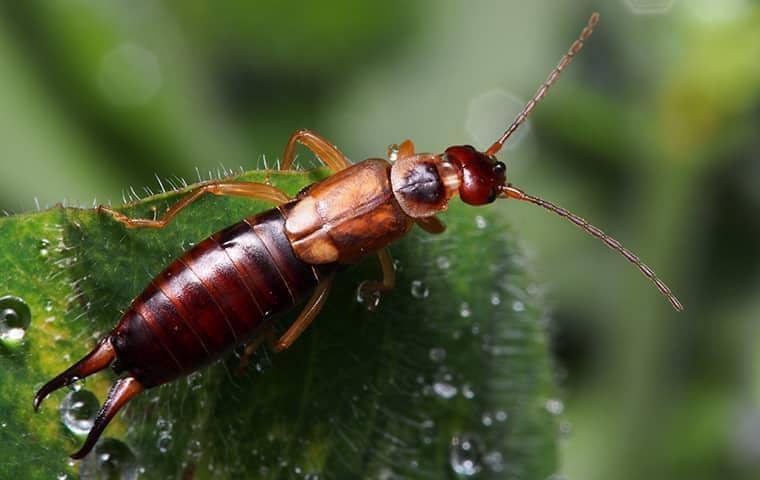
So I see Peanut Butter sent you over here safe and sound! Good to have you here. In this little corner, we're going to be covering the milkweed plant and its ecosystem, which means we're going to be going over a handful of different bugs and larva. I will include multiple pictures for reference. If that bothers you, you can go back to the regular garden here!

 Warning! Milkweed and Dogbane are VERY similar! Both are poisonous, but it's important to know which one you're dealing with so you may handle it properly. Dogbane is NOT beneficial to the monarch lifecycle.
Warning! Milkweed and Dogbane are VERY similar! Both are poisonous, but it's important to know which one you're dealing with so you may handle it properly. Dogbane is NOT beneficial to the monarch lifecycle.



There are multiple ways to differenciate the difference between milkweed and dogbane, but it can be hard just by looking at the leaves. I've noticed that dogbane doesn't have a green stem as opposed to the matured milkweed's stem. Click here for a helpful article.
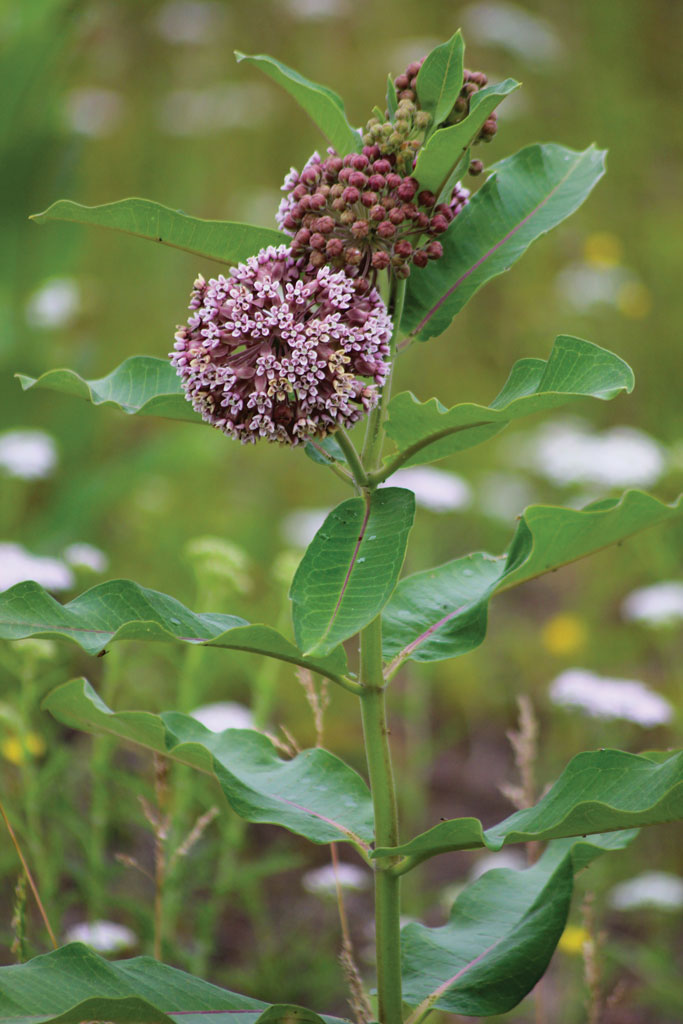
There are around 100 types of native milkweed around North America, but we're going to be going over the common milkweeds that can be found easily. Who knows? You might have some in your backyard and you may not know!
First, there's Common Milkweed (Asclepias syriaca). Pretty original name for a common type of milkweed, I know. This one can be identified by it's bloom that flowers into balls that is either pink or purple. For me, this is the native milkweed in my region, which is why I see them so often! This plant is shade intolerant, meaning it needs a lot of sunlight. It also needs moist soil, otherwise it'll shrivel up.
:max_bytes(150000):strip_icc():format(webp)/growing-butterfly-weed-in-your-garden-2539531-06-999a7926f9df4941bd424f11b0653c2c.jpg)
Butterflyweed (Asclepias tuberosa) has orange flattop flowers at the top. It's drought tolerant and can survive in dry or moist soil.
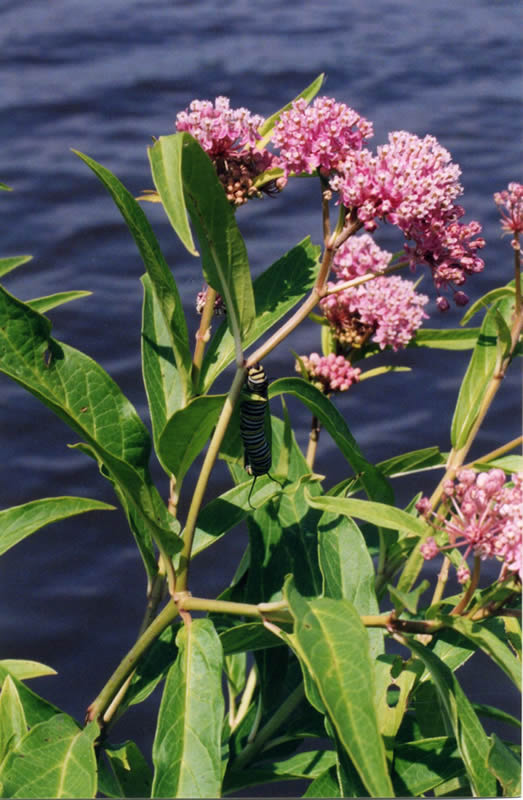
Swamp Milkweed (Asclepias incarnata) is also known as pink milkweed! It has deep pink flowers. This plant flourishes and requires damp conditions, hence its name. It also is shade tolerant!
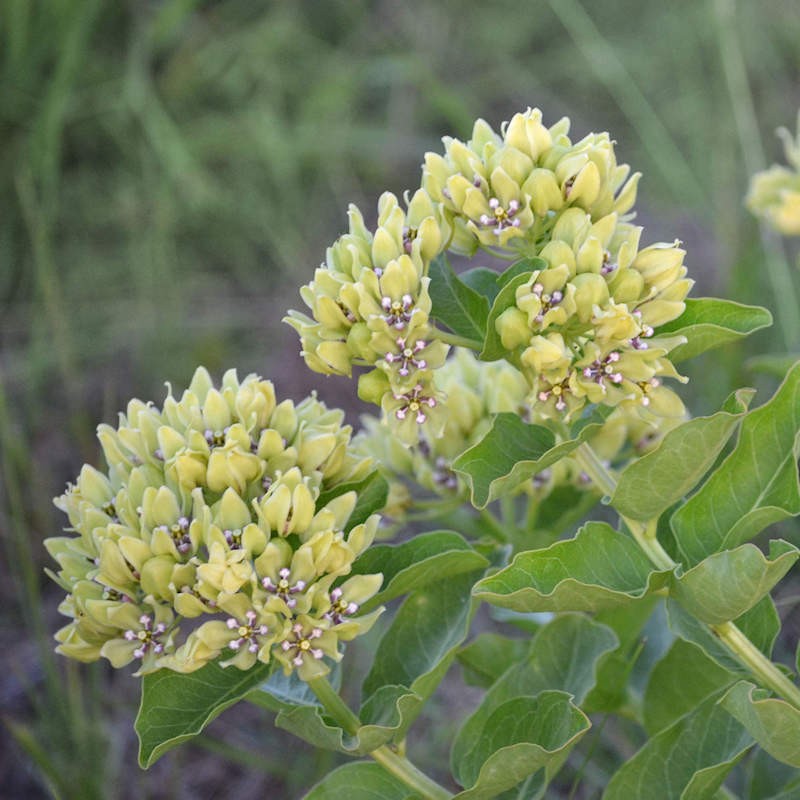
Antelope-horns Milkweed (Asclepias asperula) is also known as Spider Milkweed (I never knew that! That's super cool ^__^). As the milkweed grows, it curves to resemble antelope horns. The bloom is yellow-ish green in color and a tinge of maroon. It needs sunlight, dry or moist soil, and medium water usage!

WrONG!
Watering, sunlight, and love can certainly go a long way when caring for milkweeds, but because you're keeping the plant alive, many other bugs are going to be drawn to it. Not just the beautiful monarch. Below we will be covering a variety of different little guys that like to eat, live on, and infect your plant. I'd like to give a warning again that there will be a few gross ones pictured, so if you don't want to hang around for that, you can go back here.

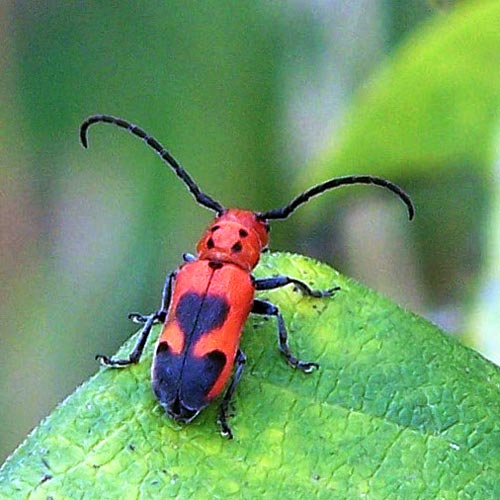
The Red Milkweed Beetle is one of my favorite residents on the milkweed plant! They don't eat caterpillars, the monarch eggs, nor the monarch itself. They're herbivores. If you have enough milkweed to feed your caterpillars and these guys, you can leave them be.
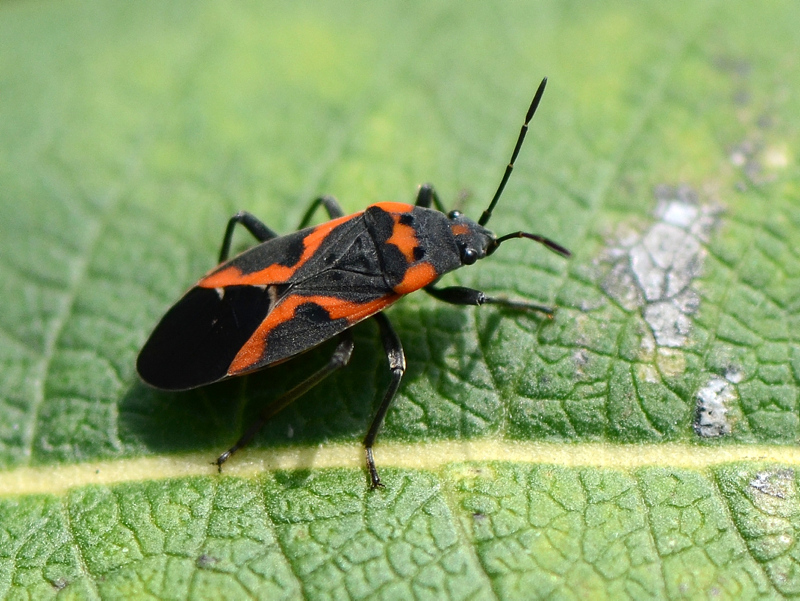
The Small Milkweed Bug usually isn't harmful to monarch caterpillars or their eggs, since they are somewhat herbaceous and love that yummy milkweed flower nectar and seeds. But there have been reports of them consuming other critters on the milkweed, including the monarch caterpillar.
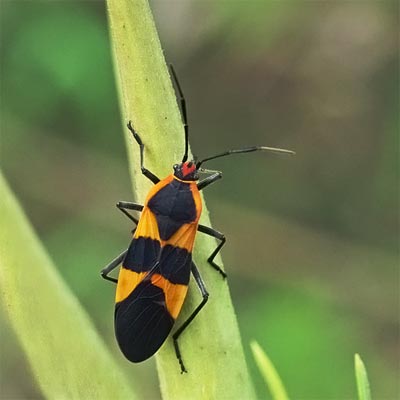
The Large Milkweed Bug might be hard to differenciate from the small milkweed bug, but there's definitely ways you can tell the differences! These guys do not feed off of monarch caterpillars/monarch eggs/monarchs. They only eat milkweed, so make sure they're not mowing down your food supply!

The Swamp Milkweed Leaf Beetle sort of looks like a ladybug, but they're not. They're harmless to your lovely monarchs and they eat the milkweed plant. So again, just make sure they're not eating your monarchs out of house and home (literally)!
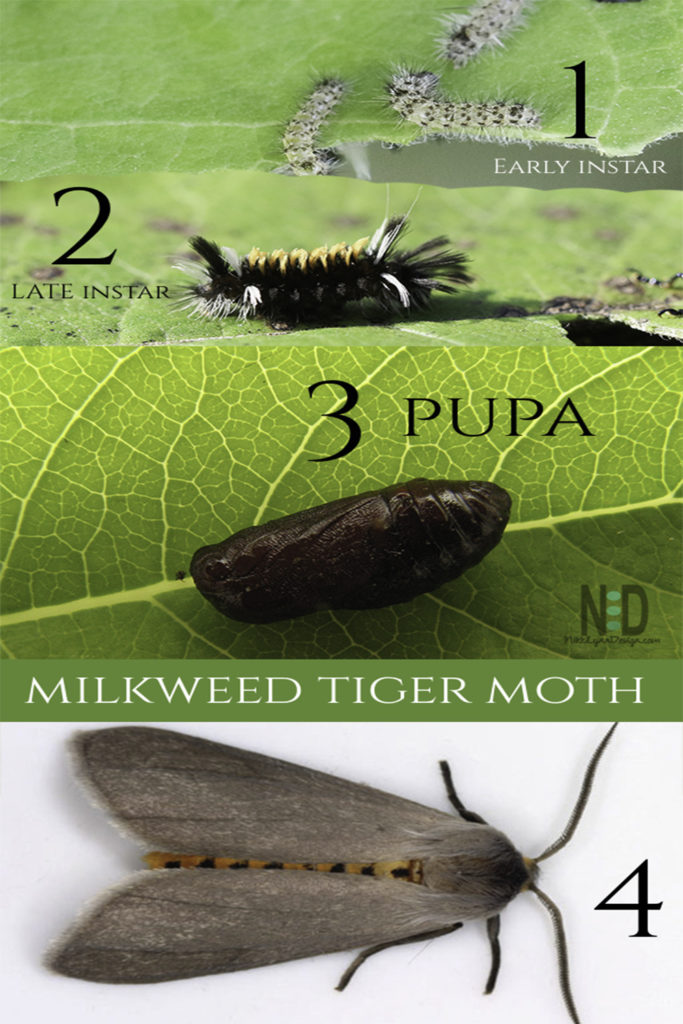
Milkweed Tussock Moths love milkweed and rely on it to live, much like the monarch! Just make sure everyone's got enough milkweed to go around.

Oleander Aphids are there for the milkweed. They eat the hell out of it and leave behind their sweet excrement (this is from the ants and lady bug's mouths, not mine!) on the plant. While they're not directly harmful to your monarchs, their droppings can attract the wrong kind of crowd to your plant. Since they solely eat the sap off of the milkweed, their droppings are very sugary. This picture makes my skin crawl, by the way LOL! Here's a guide to help you manage the aphid population if you find it overwhelming to manage them yourself. I, personally, have heard that marigolds helps heaps for deterring aphids!

The Ant is probably the one pest I've had the most trouble with aside from the earwig. The ants are there for the aphid's excrement, but they're not opposed to picking up a monarch egg if they come across it. I truly believe one of the wild monarch eggs I left out on the milkweed to try and grow up by itself was eaten right after it hatched because there was no sign of eatage on my plant and there were a few ants on the plant prior. The only way, that I know of, to deter these guys is to 1) flick them off and 2) control the aphid population.
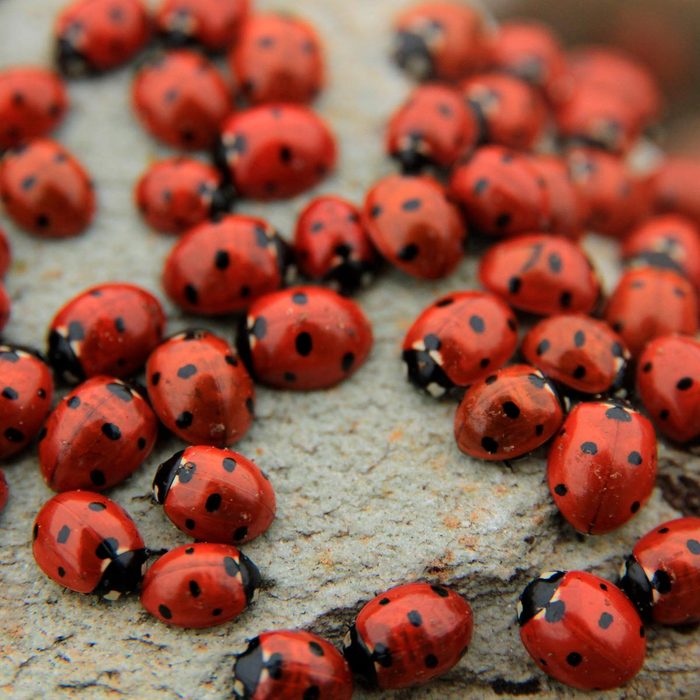
Ladybugs are the main predator of aphids. They eat aphids to their hearts content! But in this hungry hungry hippo display, they could eat your monarch eggs and small caterpillars. Again, make sure your aphid population isn't out of control!

Leaf Miners are another pest I deal with the most. At first I thought it could be mold on my milkweed leaf, but upon further research, it's leaf miners! Leaf miners are fly larvae that feeds on the milkweed leaf, eventually spreading to the rest of your plant and damaging it. The way you can get rid of these is by cutting off the leaf and tossing it away from the rest of your plants so it doesn't spread. But check on the bottom of the leaf before tossing it! There could be a monarch egg. That's how I adopted Jelly!
